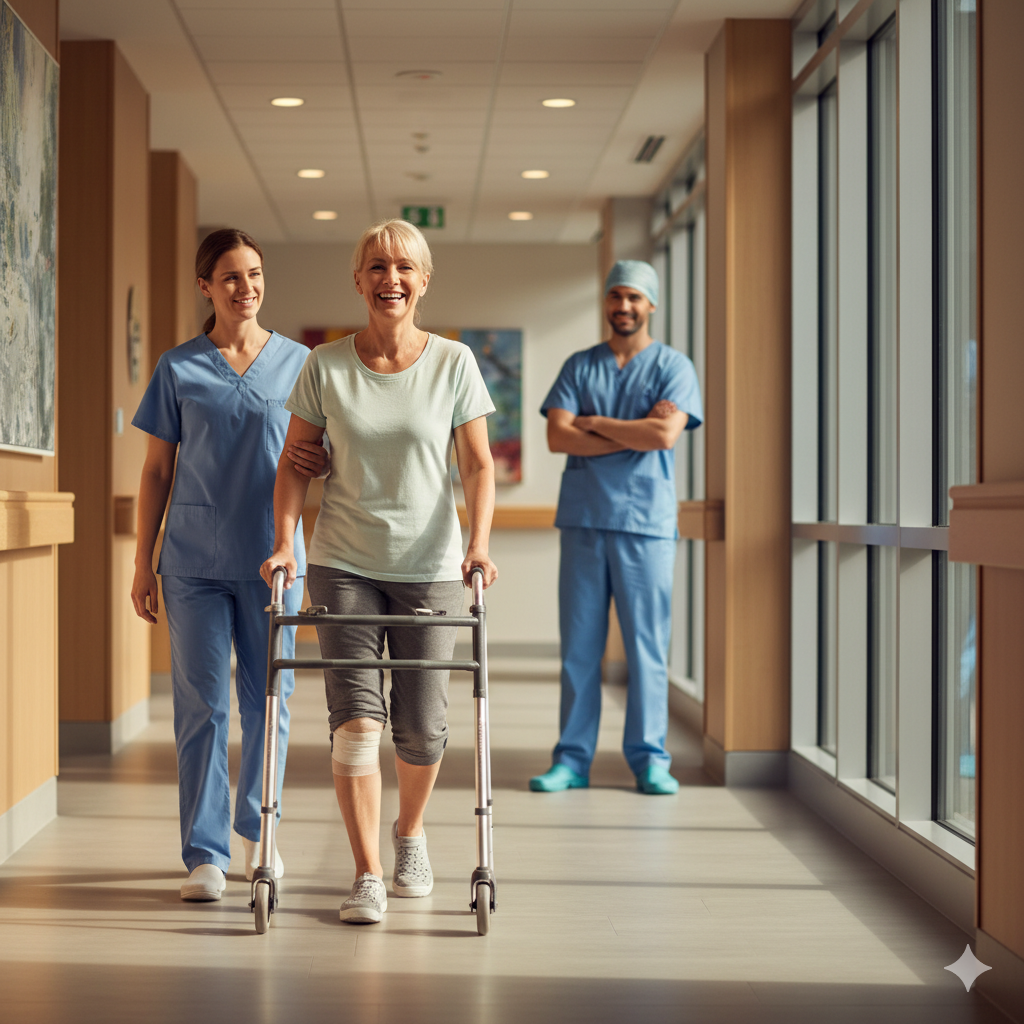Imagine a world where knee replacement surgery combines the precision of advanced robotics with the expertise of skilled surgeons to deliver outcomes that were once unimaginable. This is no longer a futuristic concept – it’s the reality of modern robotic knee replacement. As one of the most transformative advancements in orthopedic care, robotic-assisted knee surgery is revolutionizing how patients experience joint replacement, offering unprecedented accuracy, faster recovery, and superior long-term outcomes.
Dr. Tarkit Modi, a distinguished orthopedic surgeon in Indore with specialized training in robotic knee replacement surgery, has witnessed how this technology is changing lives.
Understanding Robotic-Assisted Knee Surgery Technology
Robot-assisted knee surgery represents the convergence of artificial intelligence, precision engineering, and surgical expertise. Unlike science fiction portrayals, the robot doesn’t operate independently; instead, it serves as an intelligent surgical assistant that enhances the surgeon’s capabilities. Recent studies demonstrate that robotic systems achieve angular accuracy within 1° and bone resection precision within 1mm, far exceeding the capabilities of traditional manual techniques.
The technology utilizes advanced imaging and real-time feedback to create a personalized surgical plan for each patient. Clinical research shows that robotic-assisted total knee arthroplasty achieves superior post-operative anatomical and mechanical alignment compared to conventional methods, with mean angular differences of less than 1° and resection accuracy within 0.97-1.34°.
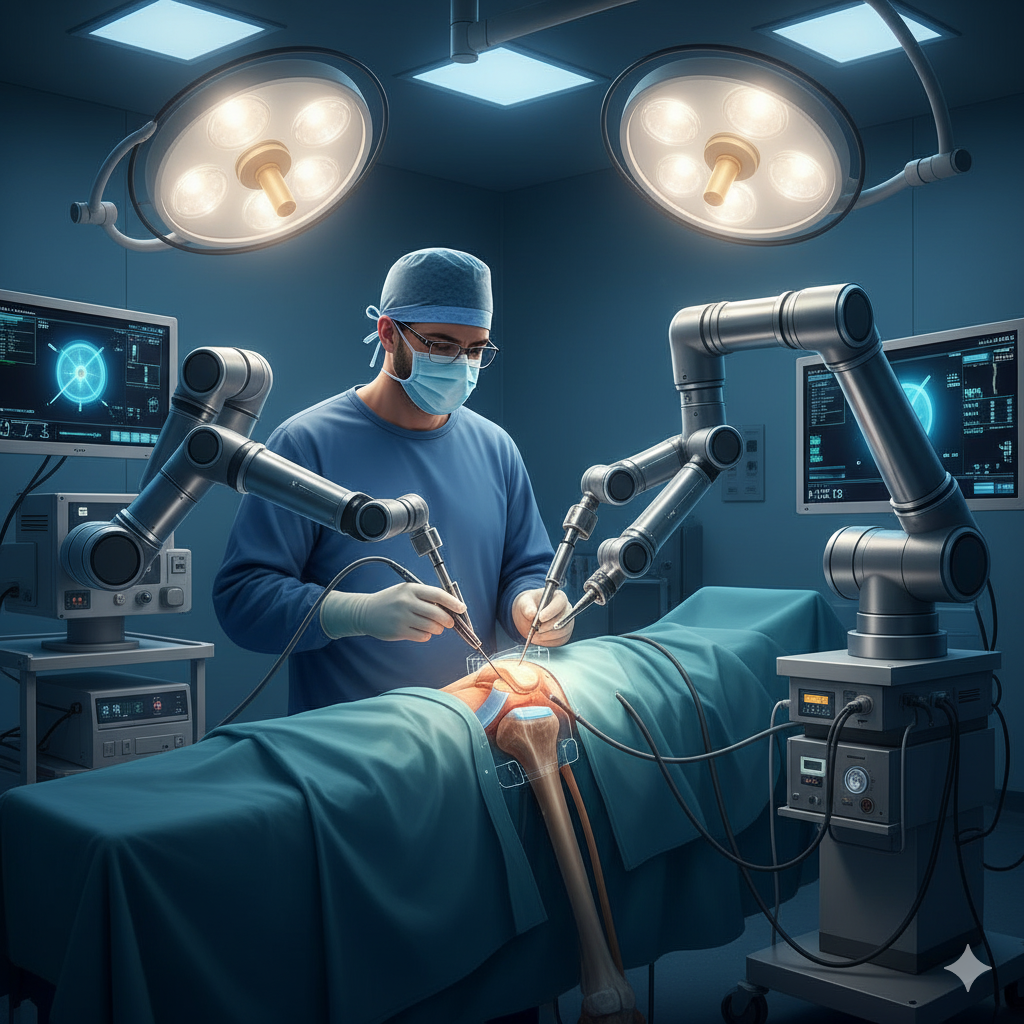
The Science Behind Robotic Precision in Knee Replacement Surgery
Advanced Pre-Surgical Planning
Before entering the operating room, robotic knee replacement systems create detailed 3D models of each patient’s anatomy using CT scans or intraoperative mapping. This personalized approach ensures that every cut, every angle, and every implant placement is optimized for the individual patient’s unique bone structure and alignment requirements.
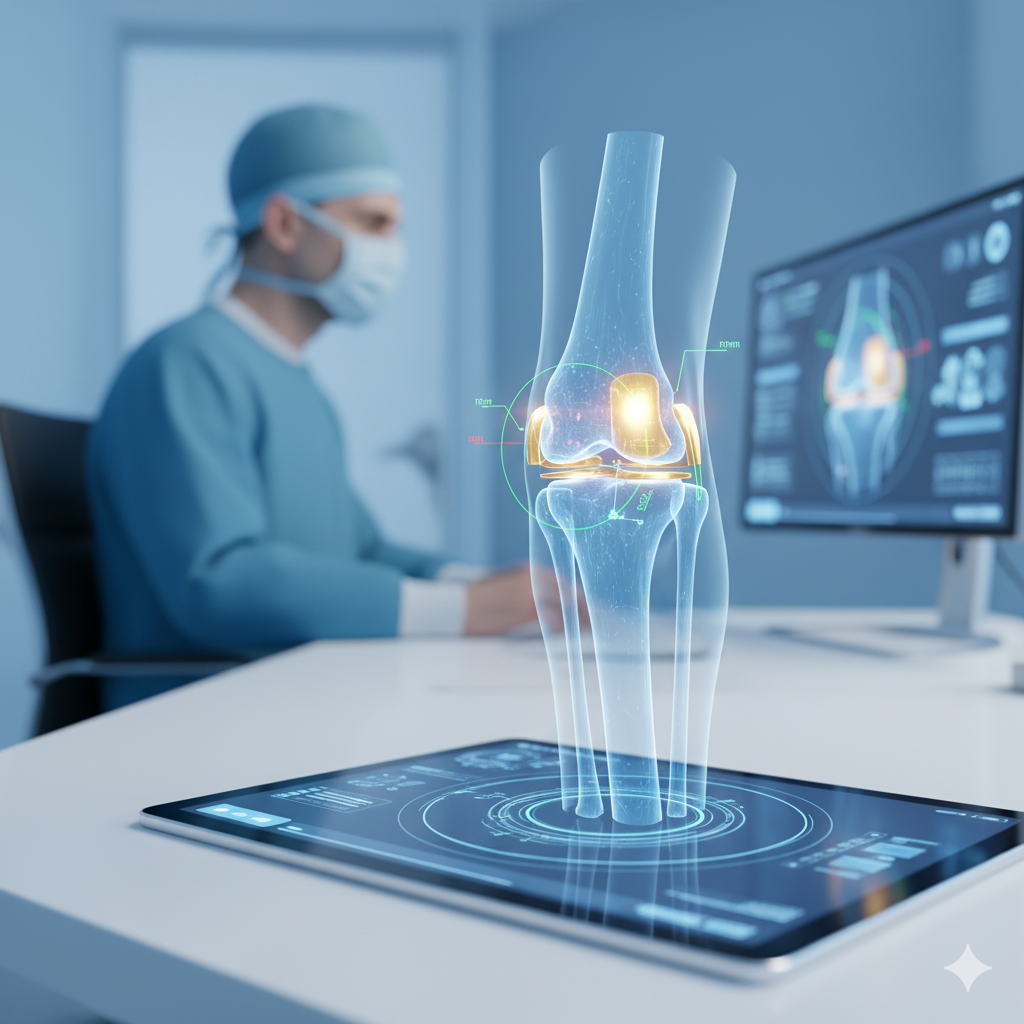
Real-Time Surgical Guidance
During surgery, the robotic system provides continuous feedback to the surgeon, ensuring that bone cuts remain within predetermined parameters. Research demonstrates that robotic guidance achieves 97.67% accuracy in component placement, compared to traditional methods that often see 28-85% of cases with suboptimal mechanical leg alignment.
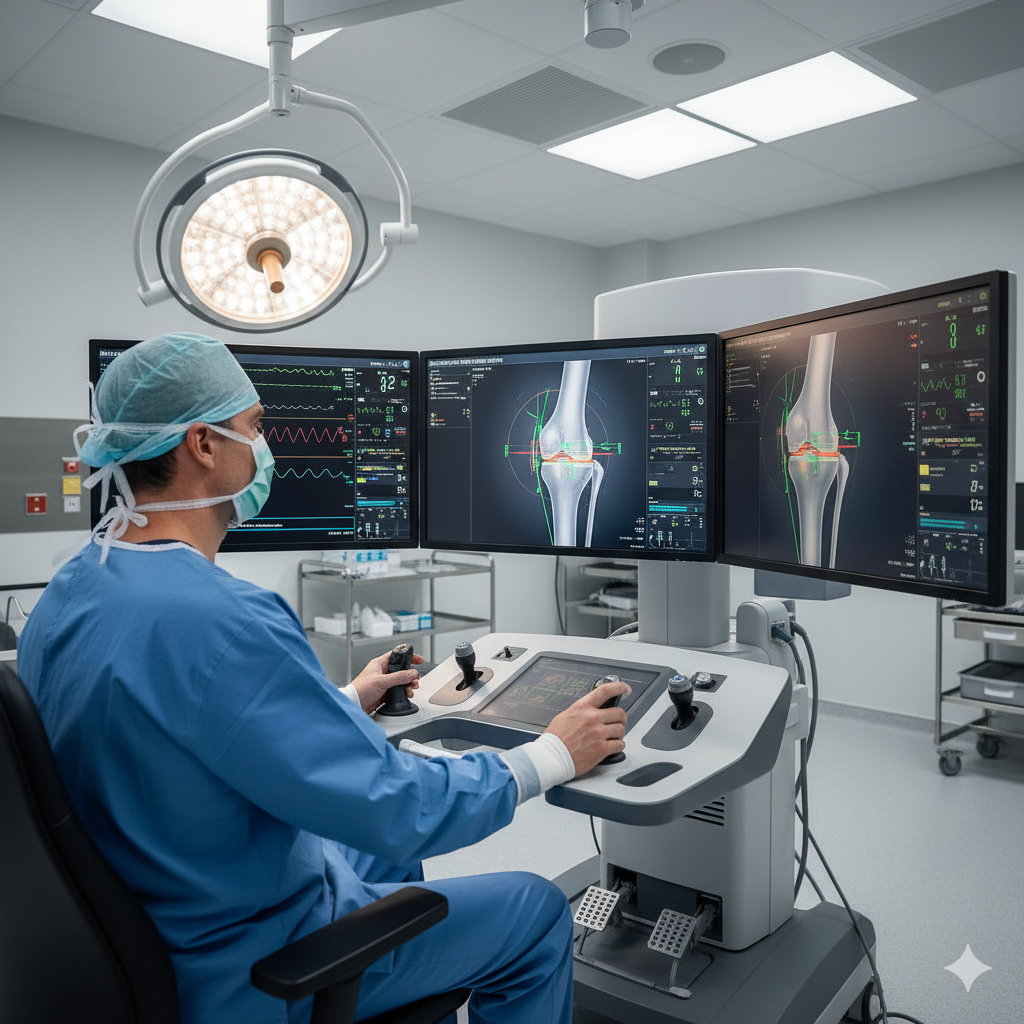
Comparing Traditional vs. Robotic Knee Replacement Outcomes
Comparison of Traditional vs Robotic Knee Replacement Surgery Outcomes
The data clearly demonstrates the superior outcomes achieved through robotic assistance. Patients undergoing robotic knee replacement experience 20-30% faster recovery times and demonstrate significantly higher satisfaction rates, with 94% reporting being very satisfied or satisfied compared to 87.4% with traditional methods.
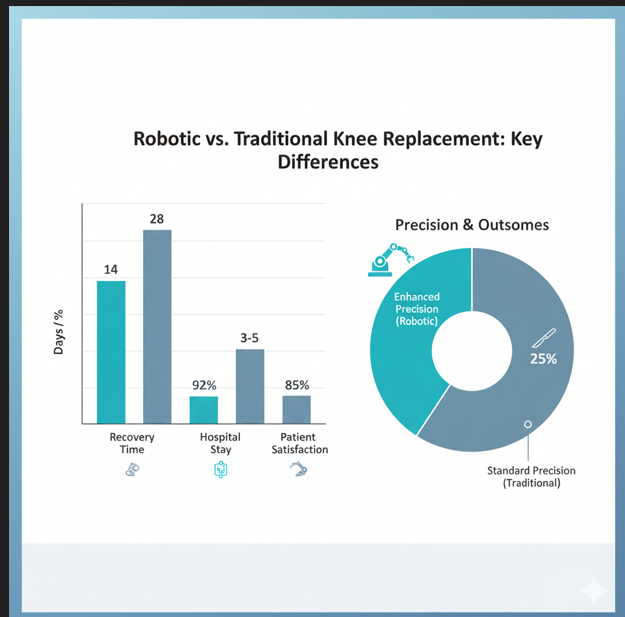
Benefits of Robotic Knee Replacement
Enhanced Surgical Precision
Robotic systems improve implant positioning accuracy by up to 95%, ensuring optimal biomechanical alignment that contributes to improved joint function and longevity.
Reduced Recovery Time
One of the most significant advantages for patients is the accelerated recovery timeline. Studies show that over 90% of robotic knee replacement patients return to driving and full work capacity within 2 months, with 38% returning to work within just 3 weeks.
Minimally Invasive Approach
Robotic assistance enables smaller incisions and less tissue trauma, resulting in reduced blood loss, decreased post-operative pain, and shorter hospital stays. Clinical data indicates that robotic patients have significantly shorter hospital stays (0.48 vs 1.2 days) and higher rates of home discharge (98.8% vs 96.8%).
Superior Long-Term Outcomes
The success rate for robotic knee replacement surgery exceeds 95%, with implants lasting 15-20 years. This enhanced longevity stems from improved alignment and reduced wear patterns, making patients 20-30% less likely to require revision surgery.
Who Benefits Most from Robotic Knee Replacement?
Ideal Candidates
Robot-assisted knee surgery is particularly beneficial for:
- Patients with complex anatomy or previous knee trauma
- Younger, more active individuals seeking optimal long-term outcomes
- Cases requiring precise ligament balancing and soft tissue preservation
- Patients prioritizing faster recovery and return to activities
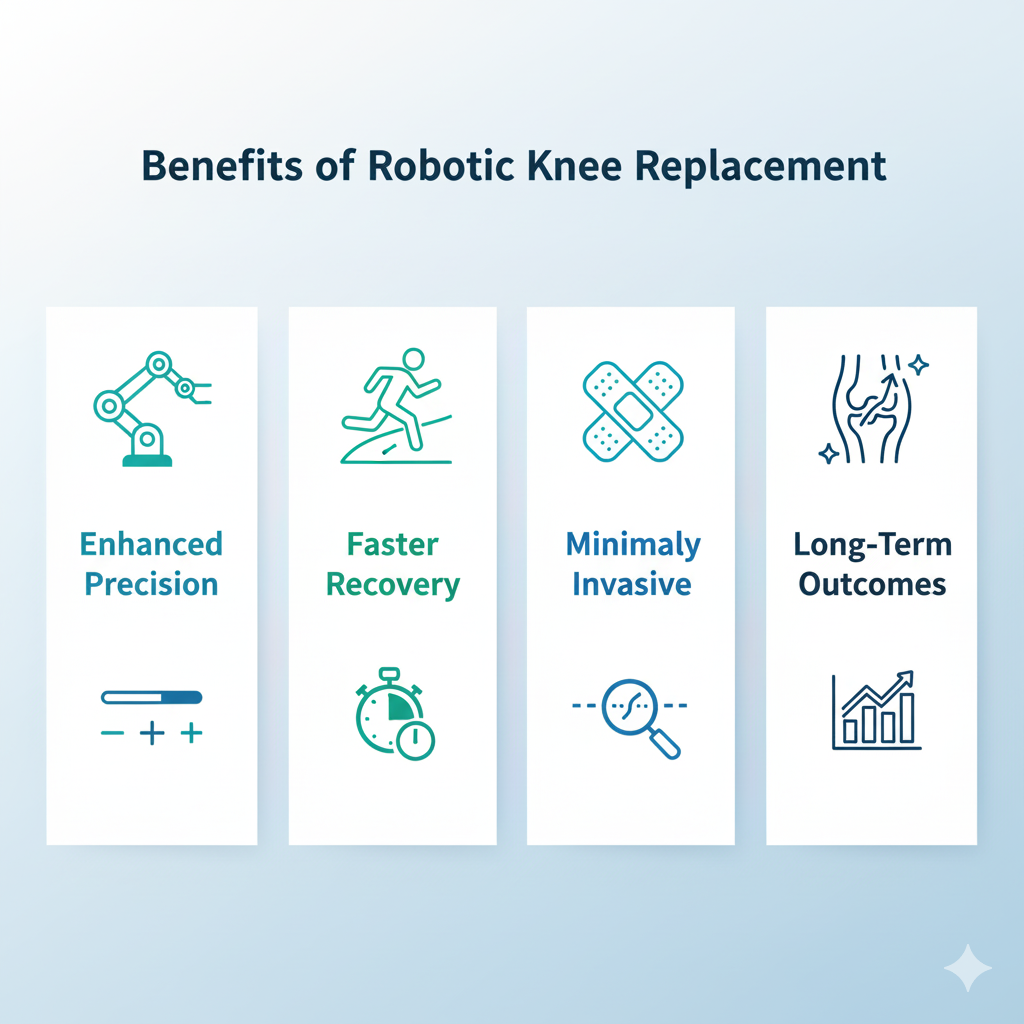
Age and Activity Considerations
Research indicates that younger patients and those with higher activity levels benefit most from robotic precision. Studies show that 76.3% of patients who experienced both traditional and robotic procedures in bilateral knee replacements preferred the robotic-assisted knee, citing improved comfort and more natural joint sensation.
Cost Considerations and Value Proposition
Investment in Long-Term Health
While robotic knee replacement in India typically costs ₹2.5-3.2 lakhs compared to ₹1.75-2.5 lakhs for traditional surgery, the additional investment delivers substantial value through:
- Reduced revision surgery risk
- Faster return to work and activities
- Lower long-term healthcare costs
- Enhanced quality of life outcomes
Future of Robotic Orthopedics
Emerging Technologies
The field continues to evolve with AI-powered surgical planning, enhanced haptic feedback systems, and improved implant designs specifically optimized for robotic placement. These advances promise even better outcomes and expanded applications for robotic assistance in orthopedic surgery.
Training and Expertise Development
Dr. Modi’s commitment to continuing education and staying current with robotic technology advances ensures that patients in Indore receive care that meets international standards. His experience with complex cases and dedication to surgical excellence position him at the forefront of robotic orthopedics in central India.
. With success rates exceeding 95%, recovery times reduced by 20-30%, and patient satisfaction approaching 94%, robotic knee replacement has established itself as the gold standard for joint replacement surgery.
Dr. Tarkit Modi’s expertise in knee replacement, combined with his commitment to patient-centered care and advanced surgical techniques, ensures that patients can access this revolutionary technology without traveling to distant medical centers
For patients considering knee replacement surgery, the choice of technique and surgeon can significantly impact both immediate recovery and long-term satisfaction. Contact Dr. Tarkit Modi at +91-8959000069 to learn more about knee replacement options and discover how this advanced technology can help you return to an active, pain-free lifestyle.
Frequently Asked Questions (FAQs)
What is robotic knee replacement surgery, and how does it differ from traditional methods?
Robotic knee replacement uses AI-guided surgical systems to assist surgeons in achieving precise bone cuts and optimal implant positioning. Unlike traditional surgery that relies on manual techniques, robotic systems provide real-time feedback and achieve accuracy within 1° and 1mm, resulting in better alignment and improved outcomes.
How accurate is robotic-assisted knee replacement surgery?
Robotic systems achieve remarkable precision, with studies showing accuracy rates exceeding 95% for implant positioning. Clinical research demonstrates mean angular errors of less than 1° and bone resection accuracy within 1mm, significantly superior to traditional methods that often see 28-85% of cases with suboptimal alignment.
How long is the recovery time after robotic knee surgery?
Recovery is significantly faster with robotic assistance. Studies show that over 90% of patients return to driving and work within 2 months, with 38% returning to work within 3 weeks. Full recovery typically occurs in 2-4 weeks compared to 4-6 weeks for traditional surgery.
Are robotic knee replacements more expensive than traditional ones?
Robotic knee replacement typically costs ₹2.5-3.2 lakhs compared to ₹1.75-2.5 lakhs for traditional surgery in India. However, this investment provides significant value through reduced revision surgery risk (20-30% lower), faster recovery, and improved long-term outcomes.

